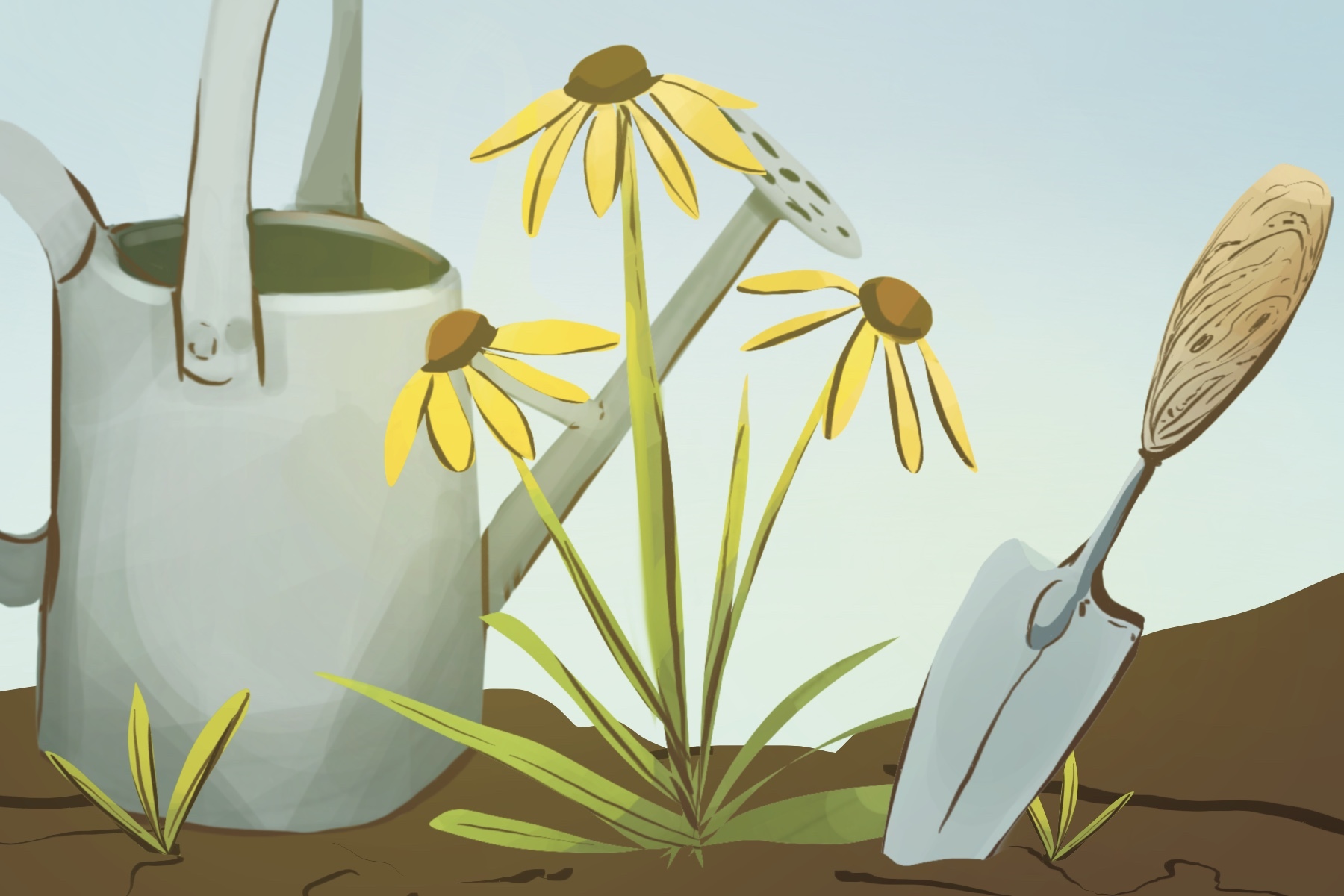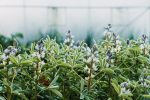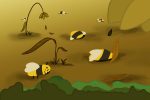The subject of the environment is one that is on a lot of people’s minds. Advice like “reduce, reuse, and recycle” is commonly given, and many have begun to carpool to certain places and walk to others. While these are great actions to take, it isn’t the average person who is harming the environment. The biggest polluters in the world are large corporations and the rich people who own them.
While carpooling and biking may not have much of an effect, something that can make a difference is planting native plants. When it comes to maintaining one’s local environment, restoring habitats is greatly beneficial.
Native plants are beneficial because the variety of insect and animal life that reside in a specific area evolved to depend on them. In Southern California, for example, California buckwheat hosts at least 36 different species of butterflies and moths. The region’s native bees also depend on the plant for its nectar. Taking away local plant life and replacing it with foreign and often invasive plants takes away the habitats that insects — and therefore animals such as birds — rely on. This has negative effects on the local ecosystem.
Many habitats in North America have been stripped away and replaced with trimmed lawns. Lawns emerged in Europe in the 16th and 17th centuries as a mark of status. They surrounded estates and showed off the owner’s wealth; having a large lawn meant that the owner could afford to hire workers to keep the grass short and the lawn free of clutter. It also showed that they did not need to use the land to farm.
Today, lawns are commonplace and most associated with the suburbs. While they are decent for playing on, they don’t have much use elsewhere. Lawns aren’t a status symbol anymore, since many people have them. In arid areas, about 75% of household water is used to maintain the appearance of lawns. The water could be used for other things, such as cleaning, cooking or growing crops. Lawns are also great environments for weeds to grow.
While most weeds aren’t very pleasant to look at, they do serve a purpose: They are an example of pioneer plants. These kinds of plants are part of a process known as ecological succession.
Ecological succession usually occurs after natural disasters such as forest fires or volcanic eruptions. Because lawns support so little life, ecological successions happen there too. Pioneer plants are called such because they are very hardy and able to grow almost anywhere. They face little, if any, competition. Pioneer plants set the groundwork that allows other plants to grow in an area. For example, in a forest biome, plants such as moss, lichen and weeds would be the first to grow. Next would be perennials and annuals, then shrubs, and finally trees.
Restoring native plant life is one of the most helpful things a person can do. Planting native plants helps the process of ecological succession and also helps to prevent weeds, as native shrubs, trees and flowers take up the space where weeds might have grown.
As stated before, native plants are important to their local ecosystems. Many are keystone species, like the saguaro cactus in the Southwestern deserts of the United States. Insects, most commonly bees and butterflies, depend on native plant life. The roots of many natives reach deeper into the ground than other plants. This helps to stabilize the soil, preventing erosion and water runoff. As the base of the food chain, native plants support the region around them. When this base is taken away, the environment becomes weaker.
In arid and drought-stricken areas, native plants are a great choice for properties. The aforementioned cacti and buckwheat have long since adapted to dry, hot climates and require very little water once established. Waterwise gardening is a popular topic nowadays, and some have replaced their turf lawns with rocks, succulents and cacti. This does conserve water, though it is important to research plants native to one’s specific region. If a certain kind of cacti is planted in an area it is not native to, it will use less water, but it won’t provide much benefit to the local wildlife.
Bees also depend on native plants. Most people probably think of the honeybee, but there are actually around 4,000 species of bees native to the United States. Honeybees were imported from Europe. While honeybees do pollinate, native bees do the majority of pollination, especially when it comes to crops such as corn, beans and squash. Native bees are often solitary, lack stingers and don’t live in hives. Instead, they may live in holes in the ground, old wood or other places. “Save the bees” is a common slogan and an important one. Seed mixes are sold containing certain flowers that attract bees. But this slogan and these methods aimed at helping bees are often centered around the honeybee. The best way to help the native bees is to plant native plants in one’s yard.
There are many websites online that list native plants by region. Native Plant Finder, for example, lists plants and native butterfly and moth species by zip code. The National Wildlife Federation website lists keystone plants and specific ecoregions of the United States, from the Great Plains to the Temperate Sierras to the Tropical Humid Forests. Some websites are targeted toward specific states, such as Missouri and the lower Midwest, Montana, California, Arizona and Pennsylvania.
Worrying about the environment is common, and it’s easy to become stressed and feel hopeless. However, one thing that would greatly benefit the local environment is researching plants native to one’s state and zip code and planting them in one’s garden. While it won’t automatically save the world, it will help the local insect population, which in turn helps other local wildlife. A person doesn’t necessarily have to replace their entire lawn, but replacing rose bushes and ivy with native shrubs, annuals and perennials is a great way to heal the habitat.

















